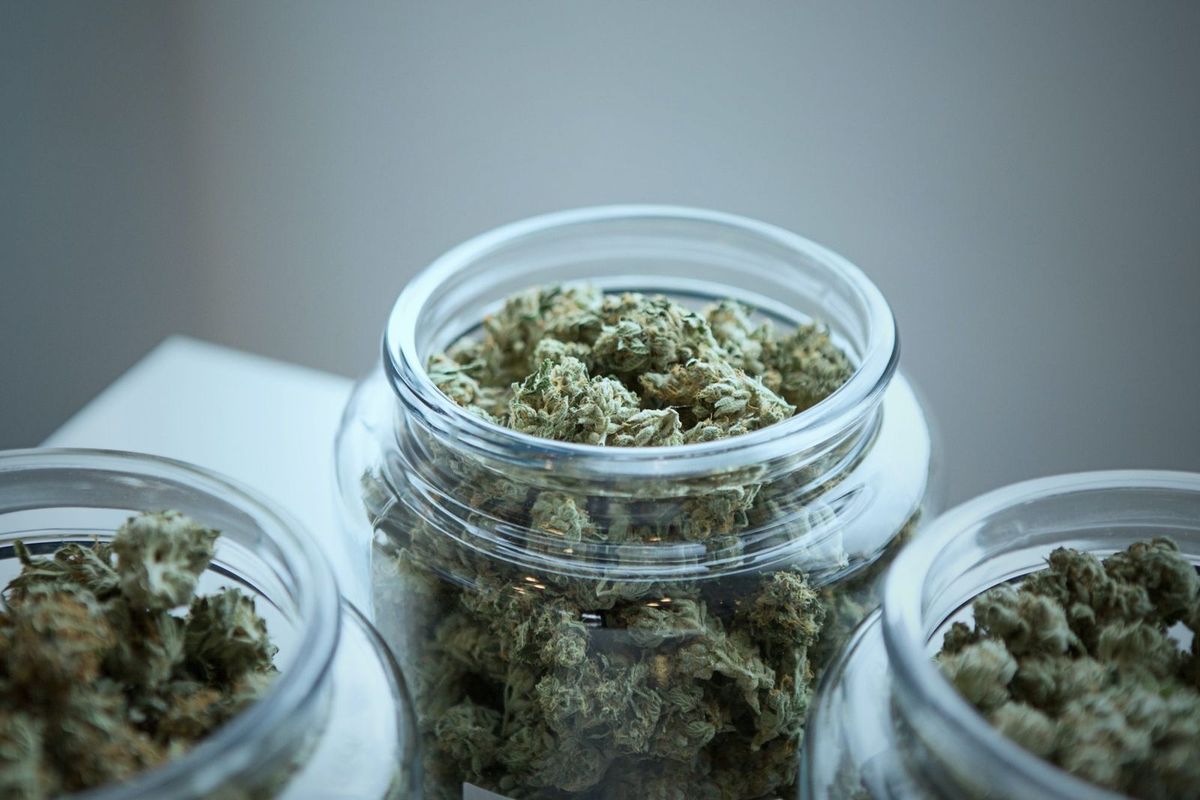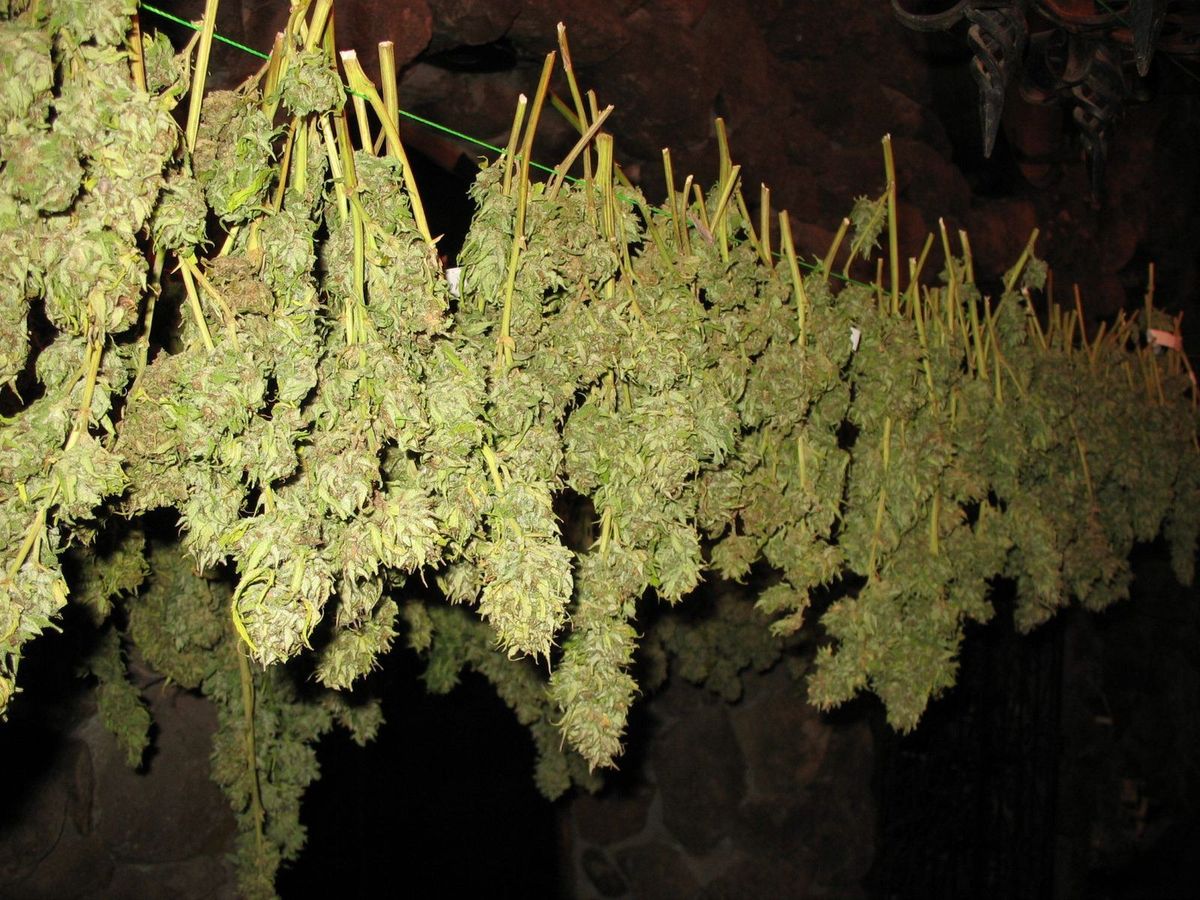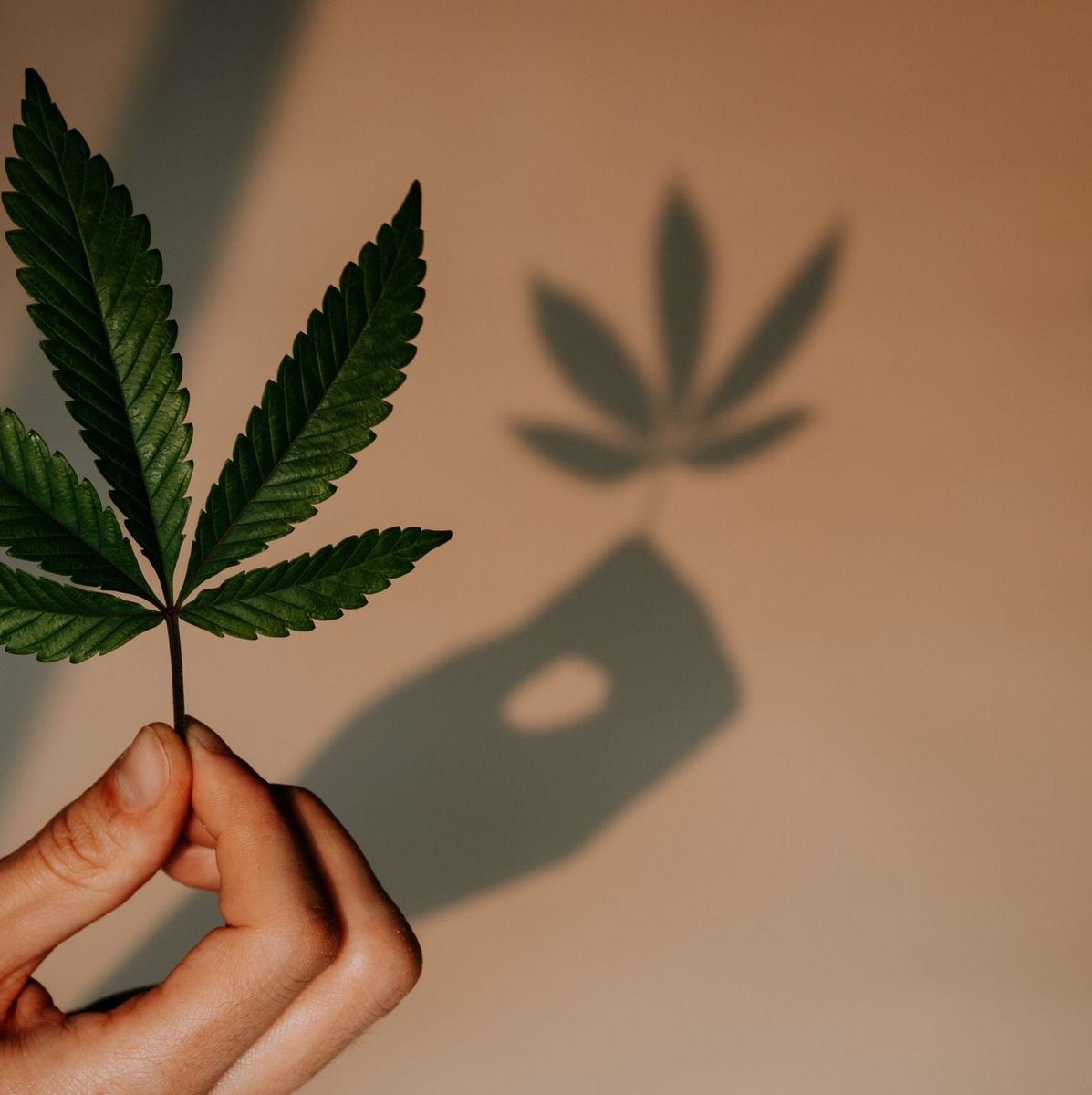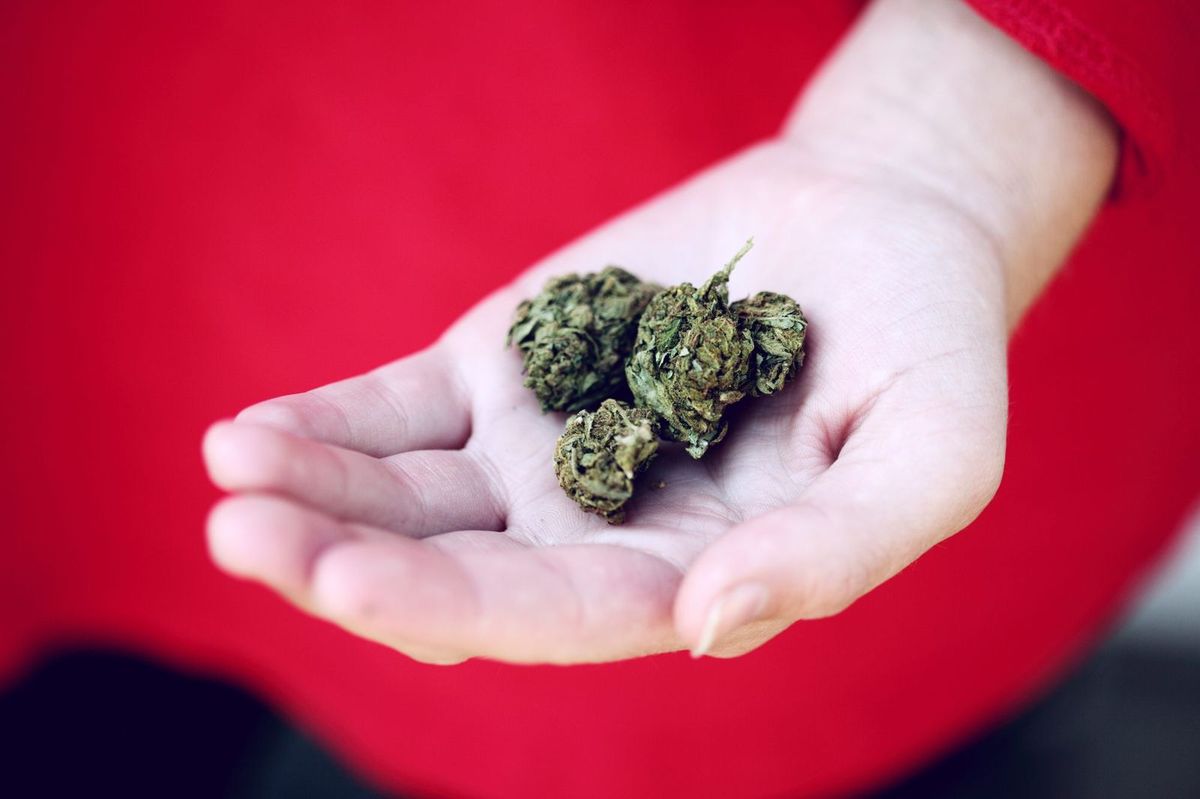Learn about the Different Ways to Dry Cannabis, The Science Behind Drying, and Some Common Pitfalls You Can Avoid
Drying cannabis does more than remove water—it shapes aroma, flavor and potency. Many growers, especially those working with Cannabis Indica Strains, prioritize slow drying to enhance terpene preservation and overall potency. As a cornerstone of quality assurance, a slow, controlled dry preserves delicate terpenes and cannabinoids. Skipping or rushing this step risks harsh taste, lower potency and mold growth.
But how exactly does drying cannabis tie into the broader picture of seed-to-sale quality management? Well, by properly and meticulously drying cannabis, cultivators can maintain consistency, potency, and overall quality throughout the entire production process. Join us as we explore the intricacies of drying cannabis and uncover the secrets to achieving the best cannabis quality assurance practice.
What’s the Difference between Drying and Curing Cannabis?
Drying and curing cannabis are two essential phases in the cultivation process that play a crucial role in the overall quality of the final product. While they may seem similar, there are key differences between the two, and understanding these differences can help cultivators produce the best cannabis possible.
Drying Cannabis
Drying cannabis is the first step after harvest. It involves removing moisture from the buds and leaves to prevent the growth of mold and bacteria. When done correctly, drying can help preserve the potency and flavor of the cannabis. The most important aspect of drying cannabis is to do it slowly and evenly. Experts recommend maintaining a drying environment between 60-70°F (15-21°C) with humidity levels around 55-60% for optimal results. This allows the cannabinoids and terpenes to develop fully and results in a better-tasting and more potent product.
Curing Cannabis
Curing, on the other hand, is the process of aging the dried cannabis in a controlled environment. This phase is equally as important as drying and can significantly impact the overall quality of the cannabis. During curing, the moisture content in the buds is redistributed, resulting in smoother smoke and improved flavor. Additionally, the curing process can enhance the potency of the cannabis by allowing the cannabinoids to fully develop and convert into their more desirable forms.
How the Drying and Curing Phases Affect Each Other
The drying and curing phases are interconnected and each affects the other. If cannabis is dried too quickly, it can result in a harsh smoke and a loss of flavor. On the other hand, if the drying process is too slow, it can lead to the growth of mold and mildew. Similarly, if the curing process is rushed, the cannabis may not reach its full potential in terms of flavor and potency. It’s important for cultivators to find the right balance between drying and curing to produce the highest quality cannabis.

How Drying Cannabis Affects Its Flavor, Potency & Appearance
Have you ever wondered why drying cannabis is so important? This process is particularly crucial when working with Cannabis Indica Strains, as their dense buds retain more moisture and require careful monitoring to prevent mold and terpene degradation.
Let’s explore the scientific understanding behind how and why the drying process affects some core components that cannabis aficionados care a lot about.
Flavor
Let’s start with the flavor. During the drying process, several chemical reactions take place that directly impact the flavor profile of cannabis. One such reaction is the conversion of precursor compounds called terpenes into their more aromatic forms. Terpenes are responsible for the unique scents and flavors found in different strains of cannabis. Through a process called terpene volatilization, these compounds are released as the plant dries, contributing to the overall flavor experience.
The drying process also allows for the degradation of chlorophyll, the pigment responsible for the green color of the plant. Chlorophyll has a grassy, vegetal taste that can overshadow the desired flavors of cannabis. By allowing the plant to dry properly, we can minimize the presence of chlorophyll and enhance the natural flavors of the strain.
Potency
Cannabinoids, such as THC and CBD, are the active compounds responsible for the therapeutic and psychoactive effects of cannabis. These cannabinoids are primarily present in their acidic forms (THCA and CBDA) within the fresh plant material.
However, through a process known as decarboxylation, the drying process allows for the conversion of these acidic cannabinoids into their active forms (THC and CBD). This transformation occurs when heat is applied to the plant material during the drying process. Without proper drying, the activation of cannabinoids may be incomplete, resulting in a less potent final product.
Appearance
When properly dried, the plant material should have a desirable texture and color. The drying process removes the majority of the plant’s moisture content, resulting in a crisp and firm texture. In addition, the removal of moisture also helps prevent the growth of mold and bacteria, ensuring the safety of the product.
As the plant dries, the chlorophyll mentioned earlier breaks down, leading to a change in color. The vibrant green hue of fresh cannabis gradually fades to a more muted, earthy tone. This change in color is often seen as a mark of quality and maturity in dried cannabis.

Related Reading
- Harvesting Cannabis
- Cannabis Storage
- Cannabis Cultivation
- Cannabis Analysis
- Cannabis Harvesting Equipment
- How To Become A Grower For A Dispensary
- Marijuana Shelf Life
How Long Does Drying Cannabis Take?
The length of time it takes to dry cannabis can vary, depending on several factors.
Size & Density
Smaller, less dense buds will dry much faster than larger, more compact ones. Additionally, the environmental conditions during the drying process can also affect how long it takes. Factors such as temperature and humidity levels can significantly impact the drying time.
Drying Environment
Ideally, cannabis should be dried in an environment with a temperature between 60-70°F (15-21°C). This temperature range allows for a slow and controlled drying process, which is crucial for preserving the quality of the flowers. If the temperature is too high, the drying process may be accelerated, leading to a loss of flavor, potency, and overall quality.
Humidity levels are equally important during the drying process. For optimal drying, the humidity should be maintained between 45-55%. This range ensures that the moisture in the flowers is slowly released, allowing for proper curing. If the humidity is too low, the flowers may dry too quickly, resulting in a harsh smoke. On the other hand, if the humidity is too high, the flowers may take longer to dry, and mold or mildew may develop.
Jarring/Curing
Once the drying process is complete, it’s time to move on to the next crucial step: jarring or curing. The curing process allows the flowers to fully develop their flavors and aromas while continuing to remove any remaining moisture. The optimal environment for jarring is similar to the drying environment, with a temperature of 60-70°F (15-21°C) and a humidity level of 45-55%. This environment allows for a slow and controlled curing process, ensuring that the cannabis flowers reach their full potential in terms of flavor, potency, and overall quality.
Pro Tip: Professional cannabis cultivators use seed-to-sale cannabis software to track any and all factors related to growing their cannabis. This helps them stay organized, and focused. on developing the best possible product.

Did you know? GrowerIQ has an industry-leading Seed-to-Sale Cannabis Software (with quality management built in) that is designed to uncomplicate cannabis production for cannabis producers throughout the world.

4 Proven Techniques for Drying Cannabis
In this section, we will explore different techniques of drying cannabis, along with their pros, cons, and other useful information, to help you make an informed decision in choosing your cannabis drying technique.
1. Hang Drying:
Hang drying is the most traditional and widely used method for drying cannabis. It involves simply hanging the harvested buds upside down in a controlled environment, such as a drying room or a tent. Here are the pros and cons of hang drying:
Pros
Hang drying allows for slow, gradual drying, which helps preserve the terpene profile and overall quality of the buds. It is a cost-effective method that requires minimal equipment. Additionally, it allows for better airflow around the buds, reducing the risk of mold or mildew growth.
Cons
Hang drying can be time-consuming, taking anywhere from 7 to 14 days, depending on various factors such as humidity levels and strain genetics. It also requires a dedicated space with proper ventilation and temperature control.

2. Rack Drying
Rack drying is another popular technique used by cannabis cultivators. It involves placing the harvested buds on drying racks or screens in a controlled environment. Here’s what you need to know about rack drying:
Pros
Rack drying allows for better airflow and even drying of the buds. It is a more space-efficient method compared to hang drying, as the buds can be stacked on multiple levels. This technique also reduces the risk of mold or mildew growth.
Cons
Rack drying may result in faster drying compared to hang drying, which could potentially lead to a loss of terpenes and overall quality if not monitored closely. It requires investing in drying racks or screens, which can be an additional cost.
3. Dry Trimming
Dry trimming involves removing the fan leaves and excess foliage from the harvested buds soon after they are cut. The trimmed buds are then hung or rack-dried. Here are the pros and cons of dry trimming:
Pros
Dry trimming can save time and labor during the manicuring process, as the leaves are easier to remove when the buds are dry. It also allows for better control over the appearance and density of the final product.
Cons
Dry trimming can cause the buds to dry faster due to increased surface area, potentially affecting the overall quality. It requires careful handling to avoid damaging the delicate trichomes and terpene-rich resin glands.
Quick Drying
Quick drying is a method used when time is of the essence, but it should be approached with caution. It involves using heat or low humidity to speed up the drying process. Here’s what you should know about quick drying:
Pros
Quick drying can be useful in situations where immediate drying is necessary, such as unexpected high humidity or time constraints. It can help prevent mold or mildew growth if done correctly and doesn’t compromise the potency significantly.
Cons
Quick drying can result in a loss of terpenes, flavor, and overall quality, as it doesn’t allow for the gradual development of the bud’s unique characteristics. It requires careful monitoring of temperature and humidity levels to avoid over-drying or damaging the buds.
Related Reading
- Cannabis Potency Testing
- Cannabis Data Analytics
- Cannabis Solvents
- Curing Cannabis
- Cannabis Extraction
- How To Know When To Harvest Cannabis
- Best Fertilizer For Marijuana
- Growing Cannabis In A Greenhouse
- Pest Control For Cannabis
- Cannabis Genetics
- Cannabis Testing Methods
- Best Microbes For Weed
- Humidity For Cannabis
- Cannabis Cultivation Techniques
- Trichome Harvest Chart
- Contaminated Marijuana
- Environmental Control Grow Room
What is the Most Effective Drying Method for Cannabis (according to Science)?
Slow and controlled hung air drying is considered the most effective method for drying cannabis. This technique involves hanging the harvested cannabis plants upside down in a dark, cool, and well-ventilated environment. By allowing the plants to dry gradually, the method preserves the plant’s essential oils, terpenes, and cannabinoids, resulting in a superior final product.
Advantages of Using the Hung Drying Technique
| Advantage | Description |
|---|---|
| Traditional Method: Hung Drying | Slow drying allows for the gradual breakdown of chlorophyll, resulting in smoother smoke. It also helps preserve terpenes—the aromatic compounds responsible for unique flavors and aromas of different strains. |
| Controlled Process | Hanging the buds allows for better air circulation around each bud, which helps prevent mold growth and ensures even drying. The controlled environment helps maintain consistent temperature and humidity levels. |
| Terpene Preservation | Slow drying allows for the gradual breakdown of chlorophyll, resulting in smoother smoke. It also helps preserve terpenes—the aromatic compounds responsible for the unique flavors and aromas of different strains. |
| Visual Appeal | Hung drying often results in visually appealing cannabis buds. The process helps maintain the shape, color, and density of the buds, which can be crucial for marketability. |
| Minimal Equipment | Compared to methods requiring specialized equipment, hung drying can be done with minimal investment. This accessibility makes it suitable for small-scale cultivators. |
| Cultural Acceptance | Cannabis cultivation has a deep cultural history in various parts of the world. Hung drying aligns with traditional practices in regions where cannabis has been cultivated for centuries. |
Scientific Explanation
The primary goal of drying cannabis is to remove moisture from the plant while maintaining its valuable chemical compounds. When cannabis plants are exposed to excessive heat or rapid drying methods, such as using ovens or microwaves, it can lead to the degradation of cannabinoids and terpenes, negatively impacting the overall quality and potency of the dried flower.
During the drying process, the plant’s moisture content decreases, which triggers the release of enzymes that convert the precursor cannabinoids into their active forms, such as THC. Slow and controlled air drying allows for the gradual breakdown of these precursor cannabinoids, enhancing the overall potency of the dried flower.

How To Know When Cannabis Buds Are Dry Enough
Knowing when your buds are dry enough is crucial to preserving their potency and flavor. One way to assess their dryness is by feeling the buds. When they are properly dry, they should feel crispy on the outside but still a little bit spongy on the inside. This means that the buds have lost most of their moisture, but there is still a small amount left. If you squeeze a bud and it feels too wet or squishy, it’s a sign that it needs more time to dry.
Another method to determine the dryness of the buds is by examining the stems. When the buds are adequately dry, the stems should snap easily when bent. If they bend without breaking, it’s an indication that the buds still contain too much moisture. On the other hand, if the stems snap too easily or crumble to dust, it means that the buds are too dry and have lost too much moisture.
It’s important to note that drying cannabis is a delicate process that requires patience. Rushing the drying process can lead to buds that are too dry, resulting in harsh smoke and loss of potency. On the other hand, if the buds are not dried enough, they can develop mold or mildew, which can ruin the entire harvest.
How to Dry and Cure Cannabis Buds Fast?
Drying and curing your cannabis buds is a crucial step in the cultivation process. It not only affects the quality and potency of your final product but also plays a significant role in preserving its aroma and flavor. While the traditional drying and curing methods can take a significant amount of time, there are proven tactics that can help speed up the process without compromising the quality. In this blog post, we will explore some of these tactics and how they can be implemented.
Here are some proven techniques to used during the cannabis drying process that will help you produce a high-quality, and potent product.
1. Proper Trimming
Before drying your cannabis buds, it is essential to ensure that they are properly trimmed. Removing excess leaves and stems not only improves the aesthetics of your buds but also helps in reducing the drying time. By removing unnecessary plant material, you allow for better airflow and reduce the overall moisture content, which can expedite the drying process.
2. Controlled Environment
Creating the ideal drying environment is crucial in speeding up the process. A controlled environment with the right temperature and humidity levels can help remove excess moisture from the buds effectively. It is recommended to maintain a temperature of around 60-70°F (15-21°C) and a humidity level of 45-55% during the drying process. Using dehumidifiers or fans can also aid in airflow and moisture removal.
3. Proper Air Circulation
Adequate air circulation is essential to ensure that the buds dry evenly. Hanging the trimmed buds on a clothesline or drying rack allows for better airflow, ensuring that no moisture pockets develop. It is also advisable to periodically rotate the buds to ensure even drying. This can be done every few hours for the first few days and then once a day until the desired moisture content is achieved.

4. Pruning Technique
Another tactic to expedite the drying process is to employ a technique called “pruning.” By selectively removing larger leaves from the plant before harvesting, you can reduce the overall moisture content and speed up the drying time. This technique allows the buds to dry faster and reduces the chances of mold or mildew development.
5. Monitoring Moisture Content
To ensure that your buds are drying at the optimal pace, it is crucial to monitor their moisture content regularly. Using a hygrometer or a moisture meter, you can measure the moisture levels in the buds. Aim for a moisture content of around 10-15% before moving to the curing phase. It is important not to rush this step, as premature curing can lead to mold or mildew issues.
By implementing these proven tactics, you can significantly reduce the drying time of your cannabis buds without compromising their quality. Remember, drying and curing are critical steps in the cultivation process, and taking the time to do it right will result in a more enjoyable and potent final product. So, be patient, monitor the process carefully, and enjoy the rewards of your labor.
What Are Common Cannabis Drying Mistakes?
Unfortunately, there are common mistakes that many growers make during the drying phase, which can have a significant impact on the drying process and subsequent phases of the cannabis cultivation lifecycle. Here are some common mistakes that you can avoid.
Drying too Quickly
One common mistake is drying cannabis too quickly. When cannabis is dried too rapidly, it can result in a harsh and unpleasant taste. This is because the chlorophyll in the plant material is not given enough time to break down naturally. In addition to affecting the flavor, fast drying can also lead to a decrease in potency, as the cannabinoids may not fully develop. This can have a negative impact on the overall quality of the final product, as consumers often prioritize potency and flavor.
Drying Too Slowly
On the other end of the spectrum, drying cannabis too slowly can also be problematic. When the drying process takes too long, there is an increased risk of mold and mildew growth. This can occur when the moisture content of the plant material remains too high for an extended period, creating an ideal environment for microbial activity. Mold and mildew can not only ruin the product but also pose health risks to consumers. Furthermore, slow drying can result in a loss of terpenes, which are the aromatic compounds that contribute to the unique flavors and aromas of different cannabis strains. Terpenes are delicate and can easily degrade if the drying process is not properly managed.
Overcrowding
Overcrowding is another common mistake, which is when cannabis cultivators hang too many buds close together. This can restrict airflow and prevent even drying. Buds that are too tightly packed may develop mold or mildew in areas where moisture becomes trapped. Proper spacing between buds ensures better airflow and reduces the risk of mold formation.
Excessive Handling
This happens when there is excessive handling of buds during the drying process can cause trichomes to fall off, resulting in the loss of valuable cannabinoids and terpenes. Trichomes are responsible for the potency, flavor, and aroma of the buds. Handle buds as minimally as possible to preserve these essential compounds.

Using Direct Light During Drying
Exposing drying buds to direct light, especially sunlight, can degrade cannabinoids and terpenes. Light can break down these compounds and result in a loss of potency and flavor. Drying buds in a dark or low-light environment helps preserve their quality.
Skipping the Curing Process
After the initial drying process, buds should undergo a curing phase to further develop their flavor, aroma, and potency. Skipping the curing step can result in a harsher, less flavorful product. Curing allows for the gradual breakdown of remaining chlorophyll and the enhancement of overall quality.
Not Monitoring Cannabis Buds
Regularly checking the buds during the drying process is crucial to catch any issues early on. Using digital hygrometers inside drying rooms can help track moisture levels accurately, ensuring you maintain ideal drying conditions and prevent quality loss. Ignoring this step can lead to problems that may not become apparent until it’s too late to address them effectively, potentially resulting in a lower-quality end product. Regular monitoring allows for timely adjustments and interventions to ensure a successful drying process.
Related Reading
- Cannabis Compliance Software
- Indoor Cultivation Design
- Quality Control Cannabis
- Cannabis Labelling Requirements
How Does Seed-To-Sale Cannabis Software Streamline the Cannabis Drying Process?
The process of drying cannabis can be time-consuming and labor-intensive if not managed properly. This is where seed-to-sale cannabis software comes into play, streamlining the entire cannabis lifecycle and adding value to cannabis producers.
Seed-to-sale cannabis software is designed to track every phase of the cannabis production process, from seed to sale. This includes not only the drying process but also cultivation, harvesting, processing, packaging, and distribution. By integrating all of these phases into one comprehensive software platform, producers can easily manage their operations, have a high level of control and visibility, streamline workflows, and ensure compliance with regulations.
Discover how GrowerIQ’s seed-to-sale software can help you set up all of the components of a successful cannabis production operation without any hassle. Questions we haven’t covered? Please reach out and let us know. GrowerIQ serves clients coast to coast, and we’re ready to help your team today.
Streamline Cannabis CultivationAbout GrowerIQ
GrowerIQ is changing the way producers use software - transforming a regulatory requirement into a robust platform to learn, analyze, and improve performance.
To find out more about GrowerIQ and how we can help, fill out the form to the right, start a chat, or contact us.

